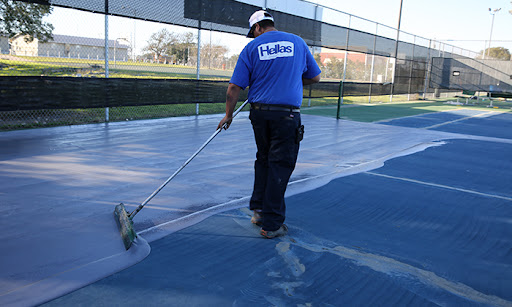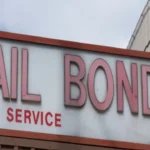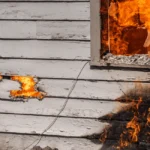A well-maintained court isn’t just about aesthetics—it’s about performance, safety, and ensuring the long lifespan of your investment. Whether you’re dealing with cracks, faded markings, or a surface that feels less than perfect, regular maintenance is key to keeping your court in top shape.
When and How to Resurface Your Court
Resurfacing is a crucial part of court maintenance. Over time, weather conditions, consistent play, and regular wear and tear can cause cracks, uneven surfaces, and fading. Resurfacing restores the functionality and visual appeal of your court, ensuring it remains safe for players.
When Should You Resurface?
- If you notice visible cracks or peeling.
- Courts with faded or uneven coloring.
- Every 4–8 years, depending on usage and weather conditions in your region.
How to Resurface:
- Clean the Court: Remove debris, dirt, and moss to prepare the surface.
- Repair Cracks or Low Spots: Use patching materials like acrylic crack filler to seal any imperfections.
- Apply a New Surface Coating: Choose a quality acrylic-based surface coating for durability, especially when working with a basketball court contractor like those in Utah.
- Level the Court: Use a squeegee to smooth the surface while applying the new layer.
Professional resurfacing services are often recommended to ensure the best results, but DIY kits can also be effective for smaller courts or quick fixes.
Repainting Tips for Court Longevity
Once your court is resurfaced, repainting ensures its finishing touches remain vibrant and functional. Court repainting involves adding lines, boundaries, and enhancements that contribute to the aesthetics and usability of the space.
Repainting Tips:
- Start with a Clean Slate: Ensure the surface is clean and free from dust or moisture.
- Use High-Quality Tools: Roller brushes or sprayers work well for even, smooth finishes.
- Measure Correctly: Use string lines, measuring tape, and stencils to ensure regulation markings are precise.
- Apply Multiple Layers: For a long-lasting paint job, apply 2–3 coats, allowing each layer to dry before starting the next.
A fresh paint job improves the court’s looks and signals to players that it’s a cared-for and professional space.
Choosing the Right Paint for Your Court
Not all paints are created equal. Selecting a paint that’s specifically designed for courts and outdoor use can make a big difference.
Features to Look for:
- Durability: Paint should withstand heavy foot traffic and harsh weather conditions.
- Slip Resistance: Ensure the paint offers enough texture for grip and safety during play.
- UV Resistance: Prevents fading caused by prolonged sun exposure.
- Compatibility: Use paints designed for your court’s surface material (e.g., asphalt or concrete).
Popular Paint Types:
- Acrylic Paints – Environmentally friendly, quick-drying, and durable.
- Alkyd-Based Paints – Long-lasting but not as environmentally friendly as acrylics.
- Epoxy Paints – Great for indoor courts but not ideal for outdoor use due to UV sensitivity.
Investing in the right paint ensures that both performance and visuals last longer.
Essential Maintenance Tips to Preserve Your Court
Maintaining your court goes beyond periodic resurfacing and repainting. Ongoing care is essential to minimizing future damage and saving costs over time.
Tips to Maintain Your Court:
- Clean Regularly:
- Sweeping the court prevents debris buildup, which can lead to wear and tear.
- Rinse occasionally with a gentle jet of water to remove dirt and grime.
- Address Cracks Immediately:
- Small cracks can turn into larger problems if ignored. Use patching compounds for minor repairs.
- Inspect Annually:
- At least once a year, walk the court to spot any blemishes or early signs of wear.
- Avoid Heavy Loads:
- Keep heavy equipment and sharp objects off the court to prevent damage.
- Proper Drainage:
- Ensure adequate drainage around your court to prevent water pooling, which can cause cracking and surface damage.
Following these maintenance steps helps prolong the lifespan of your court, ensuring it remains a place of enjoyment and performance for the long term.
Conclusion
Your court is a significant investment, and regular maintenance is vital to ensure it remains safe and functional for years to come. From resurfacing to repainting, choosing the right paint and implementing proper maintenance practices can help preserve your court, keeping it in top shape for you and future players.










